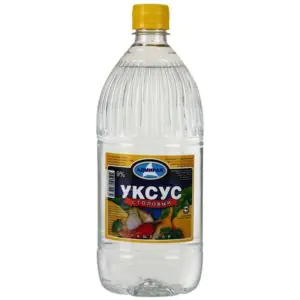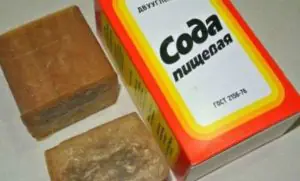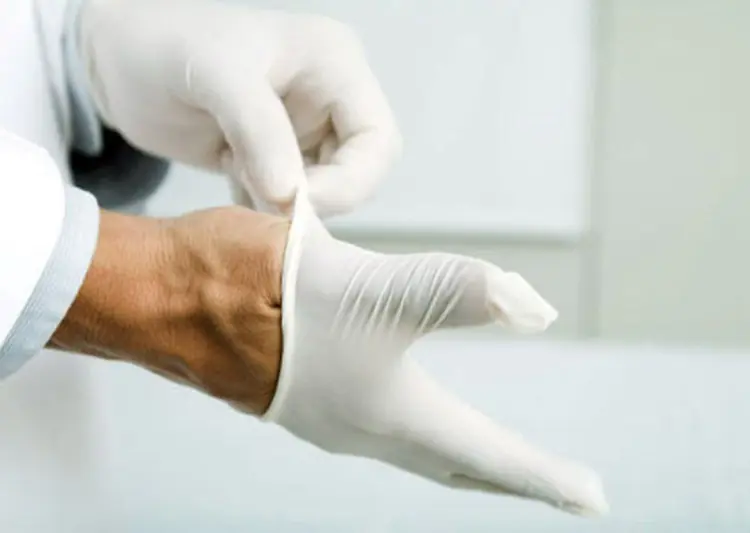Vinegar of varying concentrations is present in almost every kitchen. This solution must be used with extreme caution, as it is easy to burn yourself at home. 
Such an effect can be quite severe, so you must always remember what to do if you are burned by vinegar.
Most often, injury is caused by improper handling of fluid. Children of preschool age most often end up in the hospital, they may unknowingly douse themselves with vinegar or drink it. The damage can be internal, affecting the mucous membrane, and external, when the epidermis is damaged.
Injuries to the upper parts of the feet often occur when liquid droplets end up on the floor and legs while cooking. So how to treat a vinegar burn, and how to speed up healing?
Features of vinegar burns
The adverse effects of a chemical substance occur due to non-compliance with safety precautions and belong to the group of chemical burns. If such a substance gets on the skin, it leads to injury, and if ingested, it provokes the most serious consequences.
Types of vinegar burns:
- Skin damage. Damage occurs upon contact with a chemical reagent. Depending on the concentration of the product, as well as on the duration and nature of the exposure, the severity of a skin burn with vinegar is distinguished. As soon as the chemical reagent is on the skin, it is advisable to immediately begin to provide assistance to the victim, which includes rinsing from acetic acid, as well as neutralization. To do this, it is necessary to treat with a bicarbonate liquid. After these manipulations, be sure to consult a doctor.
- Internal burn. This type of damage by vinegar poses a serious threat to the functional state of the body, since any chemical component entering the organs of the gastrointestinal tract causes their destruction. This can even lead to death. In the stomach, the mixture interacts with hydrogen chloride, which causes an increase in the properties of the liquid. In this case, the patient urgently needs to do a deep gastric lavage, inactivate the substance and prevent the harmful effects. This is achieved by using ordinary soda. Anyone who drinks this liquid is immediately taken to the hospital.
Symptoms of the lesion
The severity of symptoms depends on the location of the lesion. With an internal or external burn, the symptoms are almost identical, but with an internal burn they are accompanied by fever and shock. A vinegar burn that affects only the skin appears almost instantly. It looks like a light-colored spot that turns gray after a couple of minutes.
The injury is accompanied by severe symptoms, acute pain and severe burning. Their intensity increases if no measures are taken.
If the esophagus or larynx gets into the burn field, then it is more severe, since the aggressive effect of vinegar essence is enhanced by gastric juice.
The most common symptoms of damage to the larynx are:
- soreness and burning in this area;
- sharp pain when trying to swallow;
- very high temperature;
- enlarged lymph nodes near the collarbone and jaw;
- increased salivation.
The degree of severity depends on a large number of components - the dosage of vinegar, the duration of exposure. The longer the solution acts on the tissues of internal organs, the more intense the destruction will be.
At the first stage, the victim experiences shock, which is caused by the toxic effects of the substance. Then the first symptoms of the disease begin to appear;
After a short period of time, a serious condition develops - toxemia. It is characterized by redness and increased temperature of the epidermis, and toxic type psychosis also appears;
Next, symptoms characteristic of various diseases arise, in particular gastritis, pancreatitis and sometimes pneumonia;
Asthenia from a burn is accompanied by an imbalance between electrolytes and proteins in the body.
Treatment

How to treat a burn with vinegar essence on the skin? A burn with acetic acid on the skin is unpleasant, but does not cause terrible consequences.
After vinegar gets on your skin, you need to clear the area of clothing or jewelry. This is done to prevent the penetration of damaging substances. After this manipulation, it is necessary to rinse the affected area. Distilled water is best for this, but boiled water can also be used. But rinsing requires a large amount of liquid, so running water is used at home.
Next, follow the following procedure:
Preparation of a solution based on soap or soda. Vinegar is acidic, so its negative effects can be reduced with the help of alkaline substances. This mixture is applied to the damaged area. She is left until she goes to the hospital.
So how to treat a vinegar burn on the skin?
In case of a burn on the skin with vinegar essence, treatment should be carried out as follows:
remove the damaged area from clothing and accessories; rinse with tap water; neutralize the acid with any alkali solution; An antiseptic can be used to prevent infection.
When an acidic solution enters the mouth, the mucous membranes are subject to aggressive influence. The speed of the patient’s recovery depends on how quickly assistance is provided. At the first stage, rinse the burned mouth. The duration of this manipulation is at least 15 minutes. Next, it is recommended to do the same with a soda solution. This is necessary to neutralize the effects of acid. If a dangerous condition occurs, contact a professional.
If acid gets into the throat, then you must immediately proceed to neutralize the substance in order to prevent further ingress. This can be done with a solution of ordinary soda. After which they call an ambulance and all further manipulations are carried out by professionals
If the vinegar has reached the esophagus, then it is necessary to rinse with copious amounts of boiled water. To do this, drink more than a liter of water. The bigger, the better. Be sure to see a doctor. The patient will have to abstain from eating for several days.
If you accidentally inhale vinegar, you can cause damage to the upper respiratory tract and even the bronchi. The scale of the burn depends on the dosage of the essence. It is necessary to immediately wash those parts that are accessible. After which they drink two glasses of a mixture of bicarbonate and water and wait for the ambulance to arrive. Such damage takes a long time to heal.
Treatment with folk remedies
After basic care has been provided and there is no threat to life and health, you can use traditional medicine recipes for further recovery. This therapy has a minimum of contraindications, but is not always more effective than pharmaceutical drugs. But the advantage of such therapy is its accessibility.
- Mashed raw potatoes. This remedy helps in healing different types of burns. The product must be applied to the damaged area. This vinegar burn ointment relieves swelling and inflammation.
- Sea buckthorn fruit oil. This product helps to quickly restore the skin after a burn with acetic acid. For a therapeutic effect, it is necessary to apply the oil to the damaged area. This procedure must be carried out until complete healing;
- Aloe juice. This remedy helps to get rid of unwanted symptoms and quickly heal. It is necessary to smear until the epidermis is completely restored.
- Oak bark products. Prepare a decoction of 4 tablespoons of bark and 3 glasses of water. Make lotions using a gauze bandage. Leave for 30 minutes. This product helps reduce swelling and has an antiseptic effect.
If no positive dynamics are observed during treatment with these medications, then it is necessary to use pharmaceutical ointments.
Acetic acid is usually included in the set of necessary food ingredients. With a high degree of probability it can be found in the kitchen cabinet of the average family. However vinegar is a dangerous liquid that causes burns, and should be handled with care.

Photo 1. The storage and consumption of vinegar must be approached with all responsibility. Source: Flickr (Mike Mozart)
What are the dangers of acetic acid?
Vinegar is carboxylic acid. This is a colorless substance, highly soluble in water, very volatile, has a characteristic pungent odor, and in low concentrations it has a sour taste. After contact with skin, inhalation or ingestion causes chemical burn those tissues with which it comes into contact.
Note! The degree of danger of acetic acid directly depends on its concentration. You can get a significant burn with a solution whose concentration exceeds 30%. If you have children in your house, do not buy essence (70%), make do with 6% table vinegar.
Causes of vinegar burns
Acetic essence, getting on organic tissue (which is the human body), causes immediate destruction (denaturation) proteins, destruction of cells with the release of water. Home and industrial preservation is based on the property of killing microorganisms and preventing them from growing.
In contact with the human body, concentrated acetic acid corrodes tissues and causes them to die (necrosis).
You can get burned by acetic acid:
- As a result of an accident. For example, when a poorly closed bottle of essence was dropped or accidentally broken, the acid got on clothes and open areas of the body. This causes characteristic burns to the lower torso, front of the legs and feet.
- As a result of negligence in the storage of hazardous substances. Such injuries are usually suffered by children and people who are not entirely responsible for their actions due to illness or old age. Basically, these are severe burns of the larynx, esophagus, and stomach when acid is drunk by mistake.
- As a result of someone's criminal actions - deliberate dousing of the face and open parts of the body.
Note! All injuries that are possible are contact injuries when vinegar gets on the skin, eyes, digestive or respiratory system.
Types and location of injuries
All types of chemical burns with vinegar are divided into external and internal, depending on where the acid hit.
The severity of the damage depends on the concentration of the acid and the time of its exposure to the tissue. The essence corrodes the skin and mucous membranes instantly. The destructive effect of a weak solution takes time. A chemical burn to the respiratory tract requires a significant amount of openly evaporating acid or requires prolonged inhalation of its vapor from an open container. Such injuries are not typical in everyday life.
Note! A burn with a weak solution of acetic acid may not appear immediately, but after some time. It is most dangerous if vinegar is spilled on clothing and the soaked fabric continues to come into contact with the skin.
When acetic acid comes into contact with the skin, it coagulates protein, destroying cells. Compared to sulfuric, nitric, hydrochloric - strong mineral acids, it has a relatively weak effect and does not burn deep into the subcutaneous tissue. On the affected area a scab forms (thin dense crust), which prevents deep penetration of even concentrated acid.
Injury to the larynx and oral cavity occurs when acid accidentally enters the mouth and attempts to swallow it. Mucosal tissues are instantly deformed. The victim feels a burning sensation and acute pain.
Burns to the esophagus and stomach occur when a person swallows acetic acid. This the most dangerous type of injury, which requires immediate delivery of the victim to a medical facility.
The lethal dose for vinegar poisoning is 40-60 ml of 70% essence.
When inhaling acetic acid vapor, the patient's breath “takes away.” A burning sensation is felt in the trachea, bronchi and lungs. Burn respiratory tract usually occurs with hot vinegar vapors, since the volatility of the acid increases significantly when heated.
Symptoms and signs
The manifestation of symptoms of a chemical burn on the skin depends on the nature of the injury. In all cases, the victim experiences pain, burning. In case of severe or extensive burns, it rises temperature bodies.
By degree of damage External burns are divided into 4 stages:
- The top layer of skin is affected. A mild burn, expressed by redness and swelling. It goes away on its own.
- The tissues of the upper layer are affected somewhat deeper. Blisters appear at the site of injury.
- The top layer of skin dies completely, down to the subcutaneous fat. The burn site is sunken and covered with a thin dry crust - a scab.
When vinegar gets inside, the symptoms are divided into local and general.
Symptoms of local damage when swallowing acid:
- Burning pain, inability to swallow, speak
- Hoarseness of voice
- Swelling of the mouth that is visible from the lips
- Edema of the esophagus
- With concentrated acid, the esophagus can be burned through
- Suffocation.
Common symptoms include:
- Painful shock, hysteria, psychosis due to intoxication
- Heart rhythm disturbance
- Weakness
- Nausea, vomiting blood
- Heat.
Note! If acetic acid is swallowed, the victim should not rinse the stomach or induce vomiting! Repeated passage of vinegar through the esophagus will only worsen the damage.
First aid
The universal “antidote” to the destructive effects of acid is baking soda. This substance, when dissolved in water, gives a slightly alkaline reaction and neutralizes acetic acid to form salt and water, i.e., substances that are not dangerous to humans.
Note! It is prohibited to use alkali solutions to neutralize vinegar! It is impossible to determine the required concentration by eye, and it is easy to aggravate the situation with an alkaline chemical burn.
First aid for a burn with acetic acid includes 2 points:
- Washing affected area jet of water at least 10-15 minutes. The colder the water, the more effectively it will reduce pain and burning.
- Treatment affected area baking soda solution. For minor damage, you can apply a paste of baking soda with a little added water.
If vinegar gets inside, the only thing that can be done for the victim is call an ambulance immediately. It is prohibited to use soda solution for rinsing or ingestion!
Treatment
Treatment for minor external burns involves treating them anti-inflammatory And wound healing means. Cream, ointment or spray is applied to injured tissue several times a day. If necessary, you can apply a bandage, but not a dry one.
Treatment of more serious external injuries and internal burns is professional and includes complex drug therapy.

Photo 2. A burn to the mucous membranes may require surgical intervention. Source: Flickr (Eugene Evehealth).
- Painkillers
- Antihistamines
- Anti-inflammatory and antibacterial medications
- Locally: anti-inflammatory, wound healing agents.
Internal injuries may require surgery.
Prevention
Preventive measures include responsible storage and careful use of hazardous substances, which is acetic acid, regardless of its concentration.
To store a bottle of vinegar:
- so that it cannot be obtained by accident, confused with something else
- so that it cannot be reached by children or other family members who are not fully aware of their actions.
When using vinegar you should:
- Close the container tightly after each use, even if you need it now.
- Open the bottle without pressing it to yourself and keeping it away from your face.
- It is forbidden to sniff the contents of the bottle by bringing it close to your nose.
- You should not determine the concentration of vinegar by taste.
Experts have developed several effective treatment regimens that can successfully treat acetic acid burns on the skin, helping to reduce the impact of the traumatic factor on the epidermis and speed up its recovery. If a person receives such damage, it is necessary to provide first aid correctly, and then consult a doctor or continue treatment independently.
Causes
A special feature of vinegar essence is that upon contact with organic substances, it instantly causes denaturation of proteins. As a result, the tissues are destroyed, and the process is accompanied by the release of water. When acid comes into contact with the human body, tissue death occurs - necrosis.
Vinegar can injure the skin if its concentration exceeds 30%.
You can get a burn in various ways:
- in case of accidental overturning of the container with essence or careless handling of it;
- as a result of negligence in storing substances dangerous to human life and health - this especially often affects young children and the elderly, who may accidentally swallow a small amount of acid left in an easily accessible place;
- as a result of criminal acts where someone deliberately pours essence on another person.
Symptoms of damage to different parts of the body
The list of symptoms from the effects of vinegar on the body depends on the area of the skin that was injured, its area and the duration of contact with the acid. It happens that unpleasant signs do not appear immediately, but only after some time. This happens especially often when acid has spilled onto clothing that has been in contact with the skin for quite a long time.
Without proper and timely assistance, a vinegar burn can lead to the death of a person if a large area of the body is affected.
The consequence of contact with the essence of the skin on the face is usually the formation of a scab. This is a thin but dense crust that prevents the penetration of aggressive chemicals into the deeper layers of tissue.
With a mild burn, redness and swelling appear on the skin. If blisters filled with cloudy fluid develop, you should consult a doctor. This indicates damage to the deeper layers of the epidermis.
Injury to the esophagus occurs when a person swallows an aggressive substance. This is the most difficult situation and poses a danger to life. In these circumstances, immediate hospitalization of the victim is necessary. A lethal dose is considered to be 40 ml of 70% essence.
When this substance is ingested, the following symptoms develop:
- severe burning pain;
- loss of voice;
- swelling of the mouth and esophagus;
- suffocation;
- pain shock;
- disturbance of heart activity;
- feeling unwell, weakness;
- nausea, vomiting with blood;
- increase in body temperature.
The destructive effect of vinegar essence in the stomach is enhanced by the presence of hydrochloric acid in it. For severe injuries to the esophagus, surgical intervention is used.
If an aggressive chemical gets into your eyes, you may experience:
Without proper and timely assistance, a person may lose his sight.
A burn of the oral mucosa with vinegar is expressed by the presence of the following symptoms:
- sharp pain;
- decreased sensitivity of taste buds;
- severe swelling that makes swallowing difficult;
- increased body temperature;
- rapid deterioration in general health.
First aid
If acid gets on clothing, it is necessary to remove it as quickly as possible - this will reduce the impact of the traumatic factor on the body. To neutralize the activity of the chemical, you should rinse the affected area with plenty of running water, placing it under running water for 15-20 minutes. This will remove aggressive particles from the skin and reduce the degree of burn.
Further algorithm for providing first aid:
- Treat the skin with soda or soap solution, which neutralizes acetic acid. On small burns, you can apply a paste of baking soda and a few drops of water.
- Apply a damp compress to the damaged area. You must first make sure that the skin is thoroughly washed, otherwise the likelihood of damage to the deeper layers of the dermis increases.
- If the lesion is serious, occupies a large area and is accompanied by intense pain, you should consult a doctor. The specialist will prescribe appropriate treatment that will promote a quick recovery.
- It is strictly forbidden to smear a burn with vinegar with brilliant green, iodine or other alcohol-containing products: such actions lead to even greater injury to the epidermis.
Rules for therapy
In the case of mild injuries to small areas of the body in adults, treatment of chemical skin burns can be done at home. The patient can resort to the use of both medications and folk remedies. If a child receives such an injury of any severity, consultation with a doctor is mandatory..
To speed up skin regeneration and prevent secondary infection, it is recommended to use the following drugs:
- Chlorhexidine is a popular antiseptic with which it is necessary to periodically treat the damaged area of the body;
- Panthenol - ointment is applied to burned areas several times a day. It helps speed up the restoration of the skin and relieves pain;
- Levomekol is a drug with an antibacterial effect that prevents secondary wound infection and accelerates healing;
- Rescuer - has disinfecting properties and stimulates the restoration of the skin.
You can treat minor burns using some folk remedies:
- Sea buckthorn oil. Apply to problem areas 2 times a day until you feel better.
- Natural ointment. Beeswax is combined with butter in a ratio of 1:3. The ingredients are melted in a water bath and mixed well. The cooled product is applied to the wound, bandaged with a bandage and kept for several hours.
- Potato compresses. The fresh vegetable is grated and applied to the problem area, securing with a gauze bandage.
- Aloe. The juice is squeezed out of the leaf and used to treat the damage. You can also apply a small piece of aloe to the wound (the fleshy part to the skin), securing it with a loose bandage.
A victim of a burn with vinegar essence needs to be provided with quick and high-quality first aid, and then, if necessary, consult a doctor. There are clear treatment regimens that will help avoid complications and promote rapid recovery.



